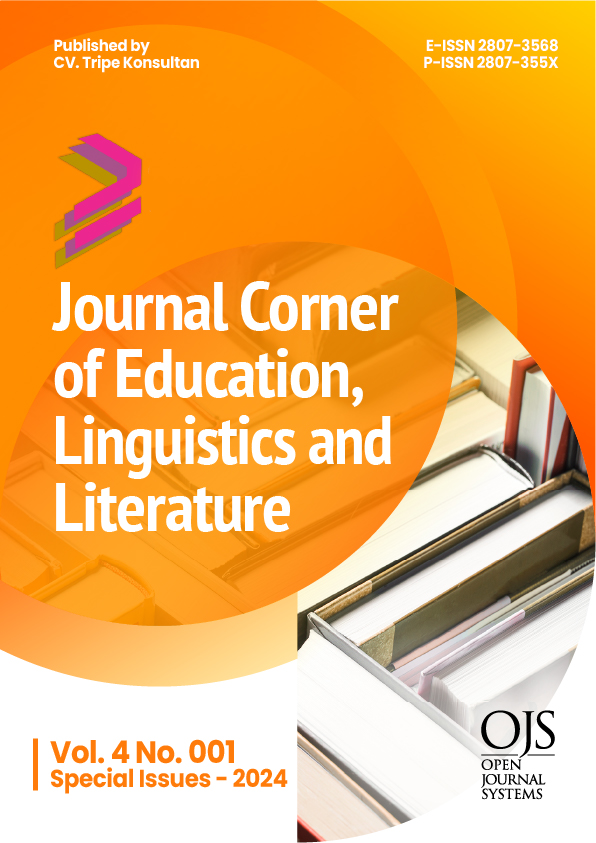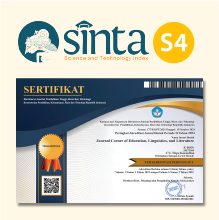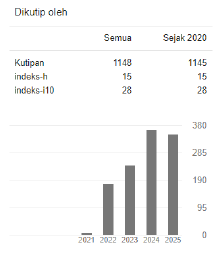Strategic Succession Plan to Expand the Sustainability of Saluyu Berkah Store: Linking and Integrating Education
 https://doi.org/10.54012/jcell.v4i001.400
https://doi.org/10.54012/jcell.v4i001.400
 Abstract views: 112
Abstract views: 112
 PDF downloads: 81
PDF downloads: 81
Keywords:
Business Family, Business Sustainability, Motivation, Succession, Integrating EducationAbstract
The ability to endure and thrive is contingent upon the previous generation's preparedness in formulating a comprehensive strategy for the succession process. This study aims to identify the factors that influence business sustainability and to pinpoint effective strategies that successors can employ to enhance performance and competitive strength. The research utilizes a qualitative methodology, focusing on "Toko Berkah Saluyu," located in Kuningan Regency, West Java, with participation from the owner's child. Data was gathered through in-depth interviews with the potential successor. The analysis employed an interactive model approach. The findings indicate that the candidate successor is prepared to carry on the family business, which is characterized as a family-owned and managed enterprise designed to operate and expand across generations. However, it is uncommon for family businesses to have successors who are adequately prepared, possessing both a solid educational background and a strong motivation to continue the family legacy. Furthermore, the research suggests that "Toko Berkah Saluyu" should enhance its succession planning by recognizing the significance of motivation in the succession process, thereby allowing the next generation to cultivate innovative ideas.
Downloads
References
Abdurokhim , A., Rahayu, A., & Dirgantari , PD (2024). Succession and parent -child relationships in business family ( study case in the Trusmi Cirebon batik center ). JPPI ( Journal Indonesian Education Research ) , 10 (4), 31-36.
Annisa, S., Rizal, M., & Herawaty , T. (2021). Literature Study : Implementation of Good Corporate Governance in Business Family . Journal Scientific Management and Business , 6 (2), 72-83.
Bertocchi, G. The Law of Primogeniture and the Transition from Landed Aristocracy to Industrial Democracy. J Econ Growth 11, 43–70 (2006). https://doi.org/10.1007/s10887-006-7405-4
Bruno Dyck, Michael Mauws, Frederick A Starke, Gary A Mischke, Passing the baton: The importance of sequence, timing, technique and communication in executive succession, Journal of Business Venturing, Volume 17, Issue 2,2002,Pages 143-162,ISSN 0883-9026, https://doi.org/10.1016/S0883-9026(00)00056-2. (https://www.sciencedirect.com/science/article/pii/S0883902600000562)
D. Miller, I. Le Breton-Miller Management insights from great and struggling family businesses Longest Range Planning, 38 (6) (2005), pp. 517-530
Erdogan, I., Rondi, E., & De Massis, A. (2018). Psychological Ownership in Family Firms: A Systematic Review and Research Agenda. Journal of Family Business Strategy, 9(2), 1-15.
Fauzan , I., Charina, A., Syamsiyah , N., Heryanto, MA, & Saefudin , BR (2021). Level of Sustainability of Community-Based Businesses Agriculture and the Factors that Influence It : A Case Study of Family MSME Businesses in the District Tanjungari , Regency Sumedang , West Java Province . Agritekh ( Journal Agribusiness and Food Technology ) , 1 (02), 155-176.
Gondowidjojo , S. (2020). LEADERSHIP SUCCESSION STRATEGY OF FAMILY OWNED BUSINESS IN THE EFFORT TO IMPROVE COMPANY SUSTAINABILITY (CASE STUDY ON TEXTILE AND GARMENT FAMILY OWNED COMPANY IN BANDUNG RAYA) ( Doctoral dissertation, UNIVERSITAS PASUNDAN).
Hambrick, D.C. (2007) Upper Echelons Theory: An Update. Academy of Management Review, 32, 334-343. https://doi.org/10.5465/AMR.2007.24345254
Hasan, M. (2018). Informal Economic Education: How Economic Education Shapes Knowledge In Business Family ?. Journal of Economics and Education , 1 (2), 30-37.
Handler, W.C. (1994) Succession in Family Business: A Review of the Research. Family Business Review, 7, 133-157. https://doi.org/10.1111/j.1741-6248.1994.00133.x
Heryjanto , A. (2018). FAMILY BUSINESS WITHOUT “CROWN PRINCE”. Journal of Business & Applied Management, 11(1), 068-080.
Isron , MAA (2021). The Influence Planning Succession , Family Relationships , and Trust To Success Succession Business in the Family Business Community of Ciputra University . Performance Journal : Journal Business Management and Start-ups , 6(2), 95-103.
Jeffery S. McMullen & Benjamin J. Warnick, 2015. "To Nurture or Groom? The Parent–Founder Succession Dilemma," Entrepreneurship Theory and Practice, , vol. 39(6), pages 1379-1412, November.
Mason A. Carpenter, Marta A. Geletkanycz, Wm. Gerard Sanders, Upper Echelons Research Revisited: Antecedents, Elements, and Consequences of Top Management Team Composition, Journal of Management, Volume 30, Issue 6, 2004, Pages 749-778, ISSN 0149-2063, https://doi.org/10.1016/j.jm.2004.06.001.
Morten Bennedsen, Kasper Meisner Nielsen, Francisco Perez-Gonzalez, Daniel Wolfenzon, Inside the Family Firm: The Role of Families in Succession Decisions and Performance, The Quarterly Journal of Economics, Volume 122, Issue 2, May 2007, Pages 647–691, https://doi.org/10.1162/qjec.122.2.647
Paul C.Y. Liu, Fei Zhu, Jie Wang, The apple doesn't fall far from the tree: Parenting styles and its effects on family business succession intentions, Journal of Business Research,Volume 172, 2024, 114429, ISSN 0148-2963, https://doi.org/10.1016/j.jbusres.2023.114429.
Prayogo , GA, Kodrat , DS, & Wiryakusuma , IGBY (2019). Factors that shape business family grow in a way sustainable . Performance Journal : Journal Business Management and Start-up , 4(2), 240-247.
Sari, DK, Doriza, S., & Zulfa, V. (2021). Education Level and Motivation Readiness Successor In Business Family . JKKP ( Journal Welfare Family and Education), 8(01), 11-21.
Setiawan, BR, & Susanto, H. (2017). Planning succession in the company family at ciputra university Surabaya . Performance Journal : Journal Business Management and Start-ups , 2 (6), 690-696.
Sobirin , A., & Basri, NF (2013). Succession in Family Business : An Exploratory Study in the Pekalongan Batik Industry . Journal Indonesian Management and Business , 1 (1), 14-27.
Soeparto , WH (2019). Achievement of Family Business Performance Through Readiness Level Successors and the Relationship between Family Members and Business . Accounting and Management Journal , 3 (2), 95-104.
Sven Wolff, Philipp Koehn, Philipp J. Ruf, Petra M. Moog, Giuseppe Strina, Measuring family influence from the non-family employee perspective: The perceived family influence scale (PFIS), Journal of Family Business Strategy,Volume 15, Issue 3, 2024,100635,ISSN 1877-8585, https://doi.org/10.1016/j.jfbs.2024.100635.
Susanti, A., & Wibisono, U. (2018). Entrepreneurial Thinking and Experience Successor to Sustainability Business Family in Laweyan and Kauman Batik Villages , Surakarta. In Proceedings of the Unimus National Seminar (Vol. 1).
Tuhardjo , T. (2020). Succession Business Family / Small Business and Success His Business . Journal Application Management , 9 (4), 1277-1283.
Widodo, MW, Sudarmiatin , S., & Wardana, LW (2024). Family Strategy in Prepare Succession : Analysis On the Planning and Implementation Process . Journal Innovation Research Management , 2 (1), 69-77.
Downloads
Published
How to Cite
Issue
Section
License
Copyright (c) 2024 Fira Komalasari, Resti Nurbayanti, Rifan Ahmad Rifandi, Nita Julajizah , Azizah Fauziyah

This work is licensed under a Creative Commons Attribution-ShareAlike 4.0 International License.
All articles published in the Journal Corner of Education, Linguistics, and Literature are licensed under the Creative Commons Attribution-ShareAlike License (CC BY-SA).

















